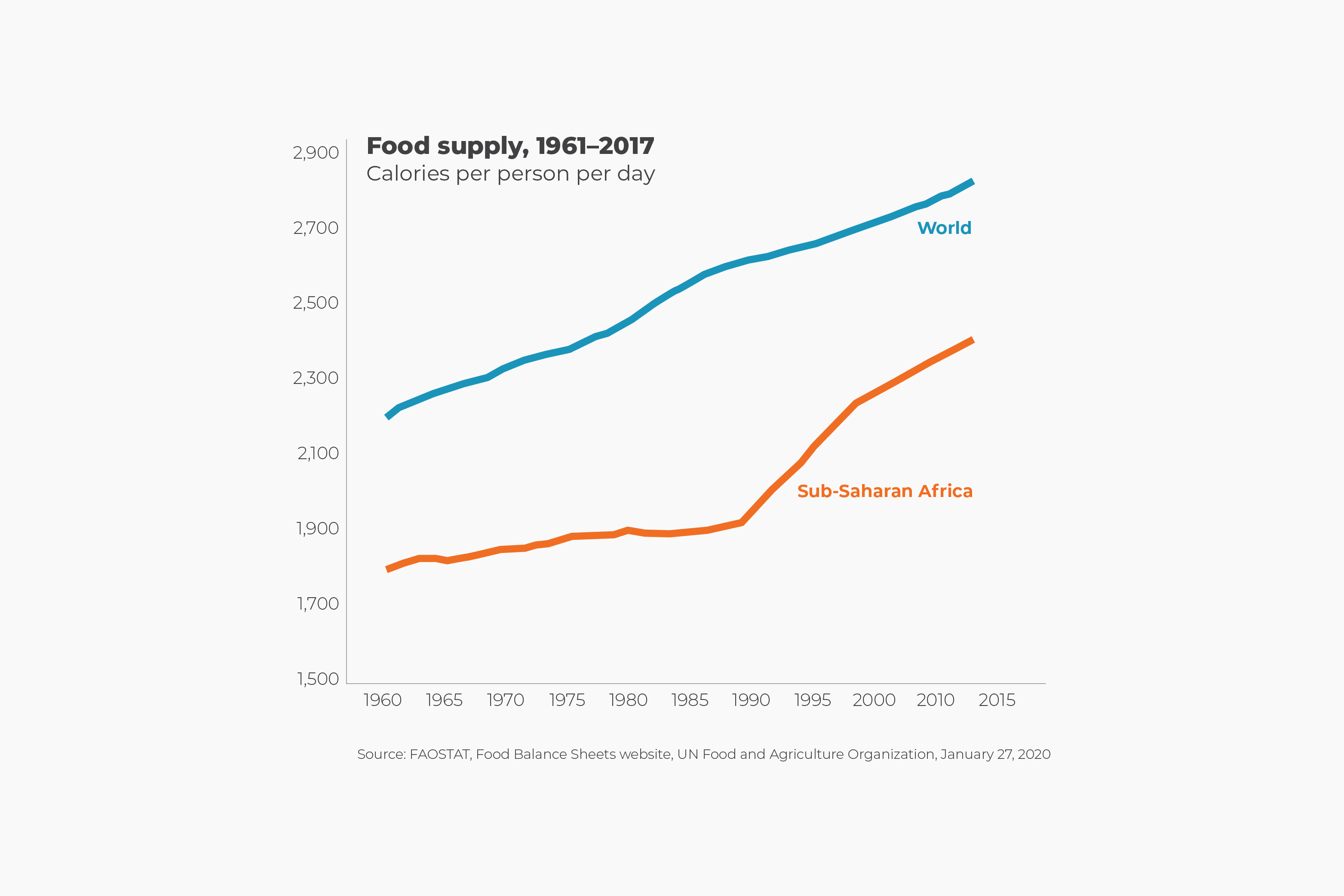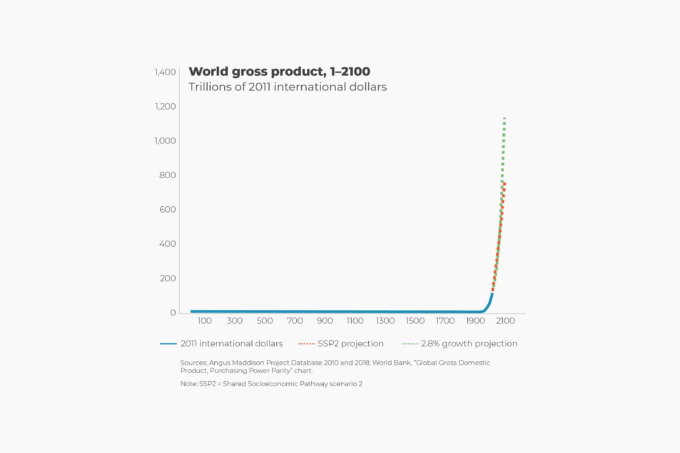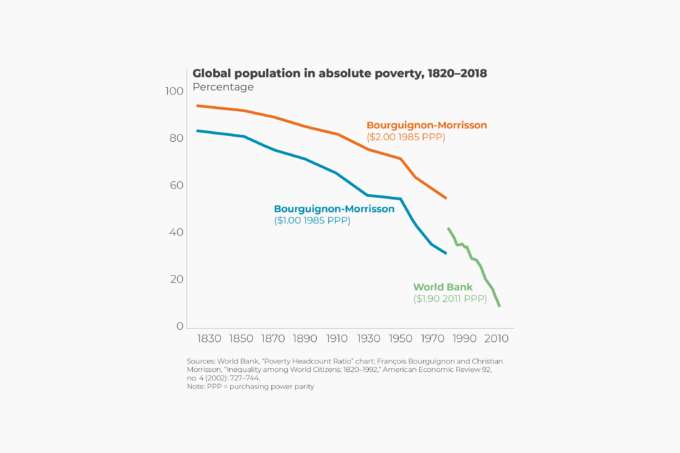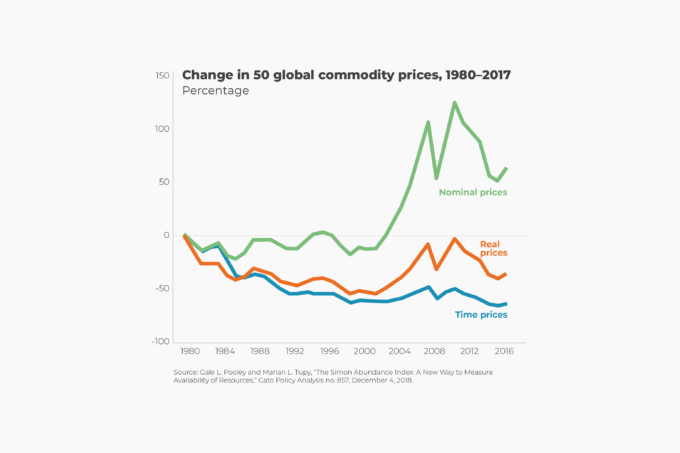Adequate nutrition is a basic requirement for human survival. Yet for most of history, food was always scarce. The prevalence of food shortages can be gleaned from the profusion of commonly used idioms, such as “feast today, famine tomorrow”; from fairy tales, such as Hansel and Gretel; and from scriptural references, such as the biblical Four Horsemen of the Apocalypse, in which Famine accompanies Pestilence, War, and Death. In fact, the greatest famine of all time occurred between 1958 and 1962, when the Chinese communist ruler Mao Zedong used brute force to nationalize his country’s farmland, causing up to 45 million deaths in the process.
Since 1961, the global average population weighted food supply per person per day rose from 2,196 calories to 2,962 calories in 2017. To put these figures in perspective, the U.S. Department of Agriculture recommends that moderately active adult men consume between 2,200 and 2,800 calories a day and moderately active women consume between 1,800 and 2,000 calories a day. In Sub-Saharan Africa, the average food supply per person per day rose from approximately 1,800 calories in 1961 to 2,449 calories in 2017. Put differently, the world’s poorest region enjoys access to food that is roughly equivalent to that of the Portuguese in the early 1960s.
What accounts for the growing access to food? First, agricultural productivity has greatly improved because of more scientific methods of farming, access to plentiful and much improved fertilizers and pesticides, and new high-yield and disease-resistant plants. Second, the world has grown much richer, and people can afford to buy more food, thus stimulating its production. Third, the spread of democracy and the free press ensures that governments are more accountable and human rights abuses widely reported. Fourth, improved transport and communications allow countries with bountiful harvests to sell or donate their agricultural surpluses to countries suffering from food shortages.
In his 1968 book The Population Bomb, Paul Ehrlich, from Stanford University, wrote: “The battle to feed all of humanity is over. In the 1970s hundreds of millions of people will starve to death in spite of any crash programs embarked upon now.” That year, the food supply in 34 out of 152 countries surveyed amounted to fewer than 2,000 calories per person per day. That was true of only 2 out of 173 countries surveyed in 2017. Today, famines have all but disappeared outside of war zones.








